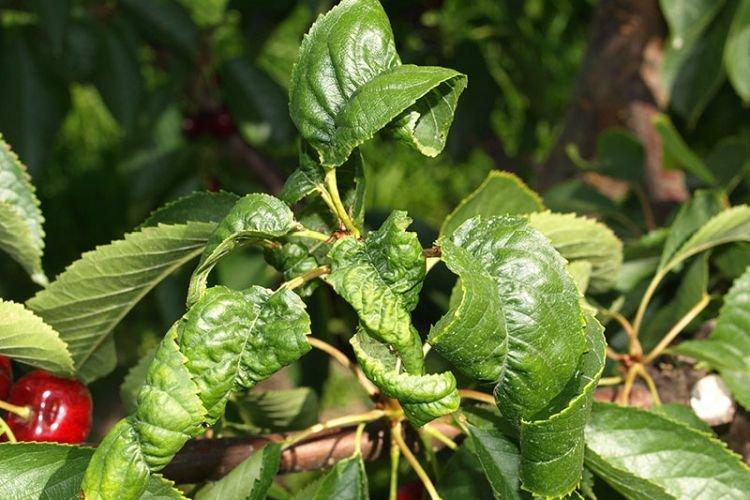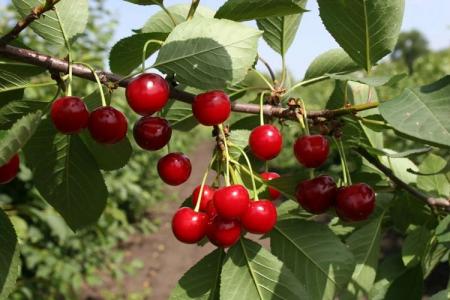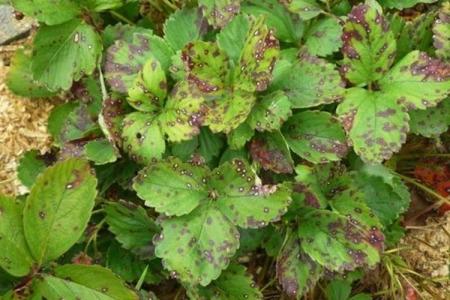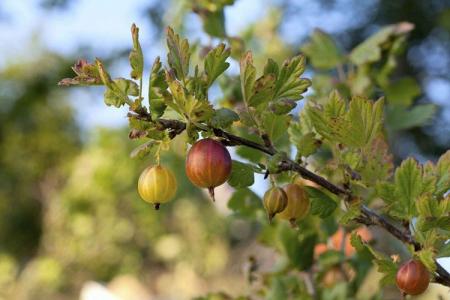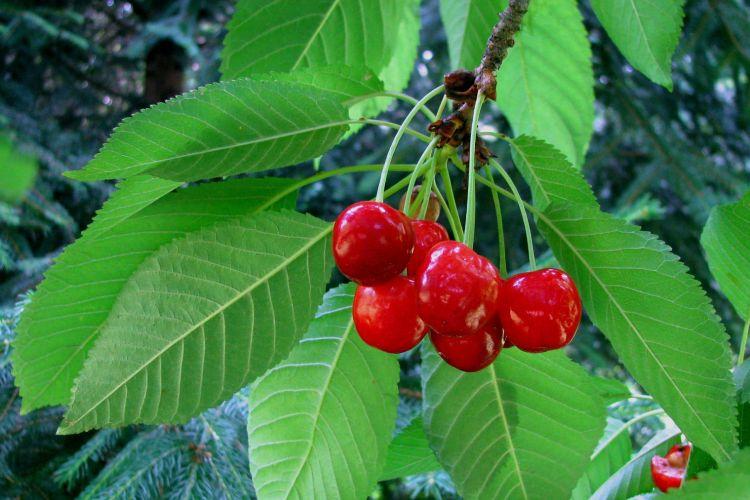
Cherries are an invaluable berry for blood, immunity and overall health. But even cherry trees are prone to disease. To spot the problem in time, watch the leaves. Most fungi and infections first appear on them. Let's tell you more!
Bumps and bumps on the leaves
Cherry leaves can be covered with bumps and irregularities of different colors. Most often this is a consequence of another fungus, stress or pest activity.
- The cherry aphid arranges the clutches on the back of the leaves, and from the outside it seems that they are covered with tubercles;
- Small tubercles and ulcers remain on leaves and shoots affected by cytosporosis;
- Due to root cancer, different parts of the cherry become covered with tumors and growths, which grow and harden.
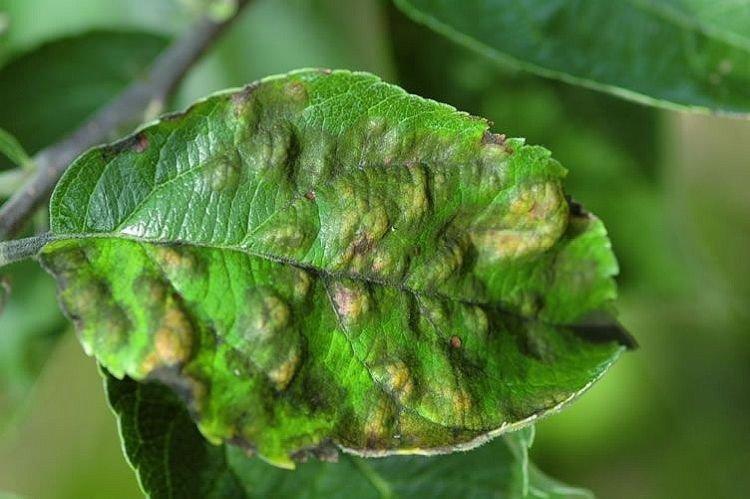
Leaves turn yellow and dry
Cherry trees shed their leaves towards the end of the season, but if the plates start to turn yellow in the summer, it's time to take action. After all, you can lose not only the crown, but also the harvest!
- In the heat and with a lack of moisture, cherries may turn yellow and dry;
- If the tree is constantly flooded, it will start to rot, and the leaves will become yellow and soft;
- The sun leaves yellow dry burns where water droplets have hit. Therefore, spray the garden only in the early morning or evening;
- Stone fruits dry up and wither if agricultural technology is seriously disturbed. For example, the place or soil is not suitable, severe frosts have passed or the tree was not cut correctly;
- The worst case scenario is an incurable mosaic that covers cherry leaves with an interweaving of chaotic yellow patterns.
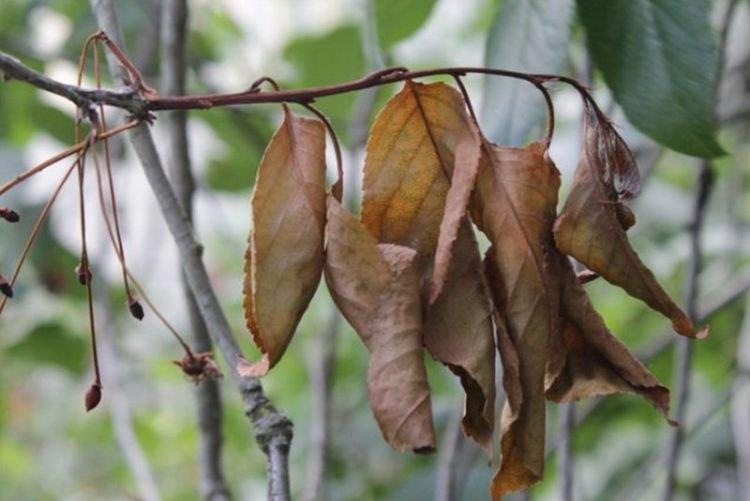
Brown spots on cherry leaves
Cherry is loved by all kinds of fungi that leave red and brown spots. It just looks scary, because almost all such diseases can be dealt with in a few sprays with fungicides!
- The scab affects cherry trees with dark spots with an olive sheen and bloom on the back;
- Monoliosis often manifests itself on berries, but the leaves also wither, become brown or rot;
- Rust - one of the most common fungi, which manifests itself in the form of bright red spots on the leaves;
- Spots of klyasternosporiosis rather give off a grayish tint, sometimes - also with a purple border. Later, the damaged areas of the leaves may shrink and fall out;
- Coccomycosis also affects the berry more, but it also affects the leaves in the form of a scattering of small specks of a reddish hue;
- When a cherry is sick with septoria, faded centers appear in the middle of brown spots;
- Dirty yellow and brown spots on the leaves, which are increasingly covered with black dots - this is a brown spot.
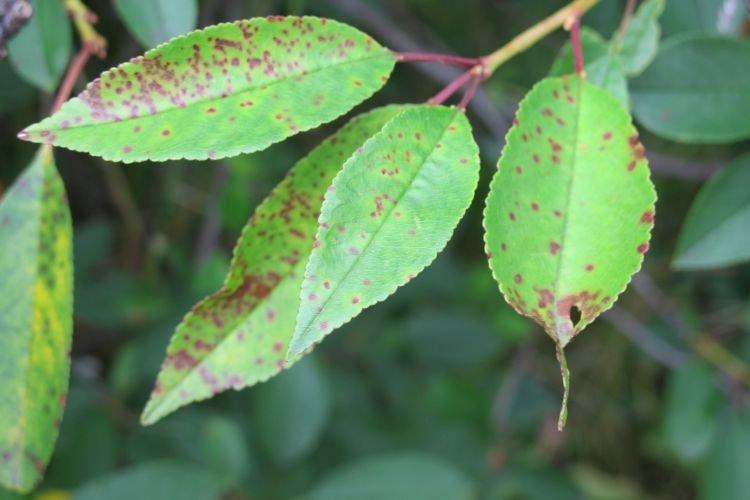
Cherry leaves turn black
The leaves rarely turn black, and most often this is already a sign of a serious illness. Try to determine the cause as quickly as possible to avoid contaminating the entire garden!
- Bacterial burn is the worst reason why leaves and shoots turn black. Cherries look as if they are burning before our eyes;
- With bacterial necrosis, in addition to black spots, open ulcers can also appear;
- If black spots resemble plaque and it seems that it can be erased with your finger, this is a sooty fungus. It is often carried by garden pests, so do not forget to spray the cherries with insecticides;
- If the root system of a cherry rots or is badly damaged, the tree may turn black and wither. Very young seedlings are especially sensitive.
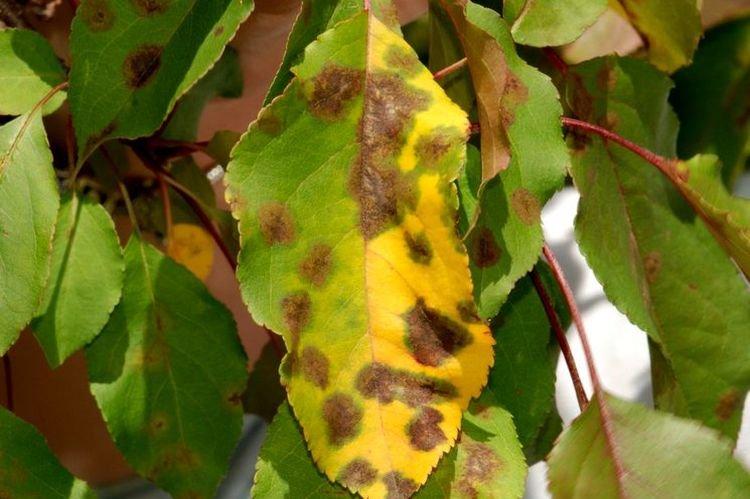
White bloom on cherry leaves
When the cherry leaves are covered with a white, velvety coating, it is most likely fungal spores. But sometimes they can be confused with a thin web of pests.
- Powdery mildew leaves that expressive white bloom. This is an ubiquitous moisture-loving fungus that manifests itself even on indoor plants;
- Sometimes a white bloom along with spots and other fungi leave, but in fact, the pathogen is not so important. All of them are successfully treated with complex fungicides;
- Cherries are very fond of spider mites, which are almost impossible to see right away. The more they become, the more they braid the tree with a whitish cobweb.
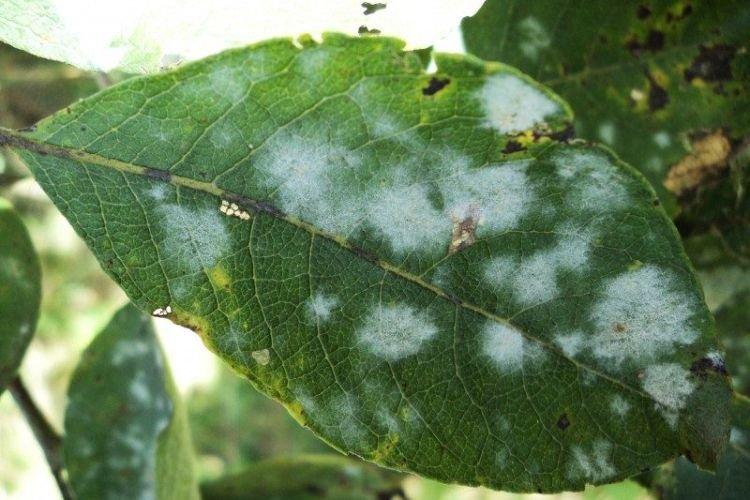
Pale and light leaves
Usually, the fading of the leaves is clearly evident when an impressive part of the crown of the cherry has already suffered. But, fortunately, the problem is most often associated with leaving and the tree will heal itself!
- If during the beginning of the growing season the cherry lacks nitrogen, the leaves will be faded and weak;
- When a tree does not have enough light, it turns pale, dries up, and in the future it may even die;
- Insects draw out all the juices from the leaves, after which they turn pale and sometimes seem completely transparent;
- If the soil in the garden is too depleted, the cherry will also be light and completely barren. Use complex feeding according to the schedule.
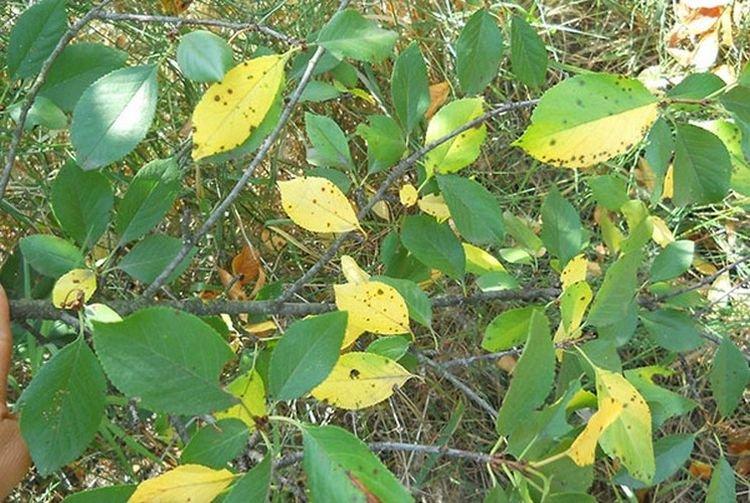
Cherry leaves curl
If the leaves curl up and wither, adjust the conditions and care. But if they are already growing in a strange irregular shape, it may be an incurable virus.
- Cherry leaves can curl when nibbled by insects. Most often, hawthorns and cherry moths do not mind eating juicy pulp;
- Sometimes different caterpillars curl up and pupate inside the plates. For example, leaf rollers got their name for a reason;
- Do not allow excessive thickening of the crown, because it becomes cramped and stuffy. Leaves shrink and wrinkle because the tree lacks resources;
- Curl is not the most common cherry disease, but it is important to detect it in time. Affected leaves grow small, crooked, irregular and oddly twisted.
